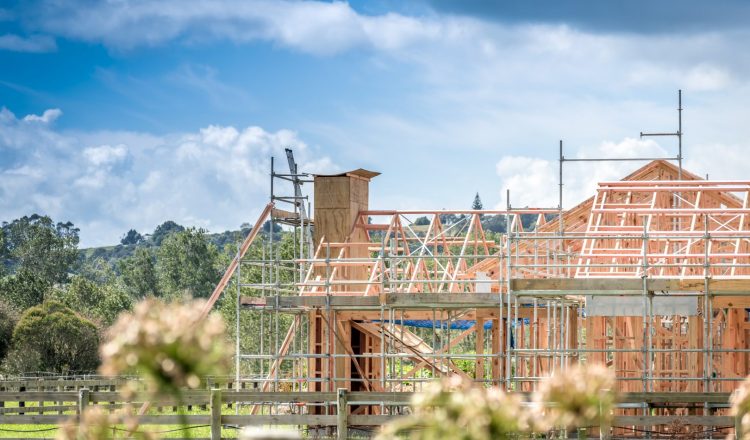Đầu tư bất động sản
Bất động sản là một hình thức đầu tư phổ biến cho nhiều người ở New Zealand. Sự khác biệt giữa một tài sản đầu tư và một ngôi nhà là chủ sở hữu kiếm được một thu nhập từ tài sản thay vì chỉ sống ở đó. Lợi nhuận từ đầu tư bất động sản là từ thu nhập cho thuê và từ bất kỳ sự gia tăng giá trị của tài sản theo thời gian.
Mặc dù đầu tư bất động sản không được coi là một cách dễ dàng để kiếm tiền vì rút tiền mất thời gian và có rất nhiều lệ phí ẩn. Tuy nhiên, nó là tuyệt vời cho lợi nhuận dài hạn khi giá tăng.
Việc vay tiền để mua bất động sản cho thuê sẽ khó hơn so với bất động sản mà bạn sẽ ở. Các nhà cho vay có giới hạn cho vay đối với bất động sản đầu tư thấp hơn. Tuy nhiên, một số người cho vay và người môi giới thế chấp có chuyên môn đặc biệt trong việc cho vay để đầu tư, vì vậy bạn nên thử liên hệ với một trong những người đó.
Rủi ro là gì?
Đầu tư bất động sản được biết đến rộng rãi như là một loại đầu tư an toàn, chỉ vì tiền của bạn được đưa vào một cái gì đó mà không có khả năng mất đi. Tuy nhiên, giống như với tất cả mọi thứ khác sẽ có một số rủi ro.
- Lãi suất nhiều khi tăng, vì vậy bất kỳ khoản tiền nào được tạo ra từ tài sản đều có thể bị giảm.
- Nếu bạn thế chấp bất động sản đầu tư của mình với cùng một ngân hàng như ngôi nhà của chính bạn, thì bạn có thể gặp rủi ro rằng ngân hàng có thể bán cả hai bất động sản nếu bạn có vấn đề về việc thanh toán một trong hai khoản thế chấp. Tốt nhất là nên tránh điều này.
- Bất cứ lúc nào người cho vay cũng có thể yêu cầu bạn hoàn trả khoản thế chấp bất ngờ và nếu bạn không thể bán tài sản của mình đủ nhanh thì bạn sẽ không thể và sẽ lâm vào cảnh nợ nần.
- Thị trường bất động sản biến động không ngừng. Nếu bạn cần bán nhà nhanh chóng hoặc chỉ thực sự muốn thoát khỏi nó vào thời điểm thị trường bất động sản giảm giá thì bạn có thể sẽ mất tiền mua nhà và khi ấy bạn vẫn nợ người cho vay sau khi bán.
Có nhiều công việc liên quan đến không?
Đầu tư bất động sản thường liên quan đến một số công việc và tốn nhiều thời gian hơn so với đầu tư tiền vào cổ phiếu hoặc gửi tiết kiệm trong một ngân hàng. Tuy nhiên nó có thể có chi phí lớn hơn. Có rất nhiều thời gian cần thiết cho các công việc như tìm kiếm bất động sản phù hợp, thực hiện bất kỳ công việc nào cần thiết để làm cho nó có thể sống và thoải mái và tìm người thuê. Một khi tất cả những điều này được thực hiện, vẫn còn nhiều công việc không thể tránh khỏi trong tương lai, bao gồm công việc sắp xếp và bảo trì hoặc tìm người thuê mới nếu những người cũ rời đi.
Nếu nhà đầu tư không có thời gian này hoặc không muốn tự làm điều đó thì có nhiều cách để giải quyết. Bạn có thể nhờ một người quản lý tài sản hoặc sử dụng một đại lý bất động sản để thực hiện các loại nhiệm vụ bảo trì này cho bạn. Bạn sẽ mất tiền để có một trong những thứ này, nhưng điều đó có nghĩa là bạn có thể giải phóng thời gian cho bản thân và yên tâm khi biết rằng một chuyên gia đang chăm sóc nó.
Còn cách nào khác để đầu tư vào tài sản?
Có nhiều cách khác mà bạn có thể đầu tư vào tài sản. Có thể đầu tư vào các quỹ được quản lý để mua và bán tài sản thương mại. Điều này có thể là họ nợ các tài sản như cao ốc văn phòng, trung tâm mua sắm hoặc nhà máy. Nó cũng có thể có nghĩa là họ sở hữu cổ phần trong quỹ sở hữu tài sản.

















































